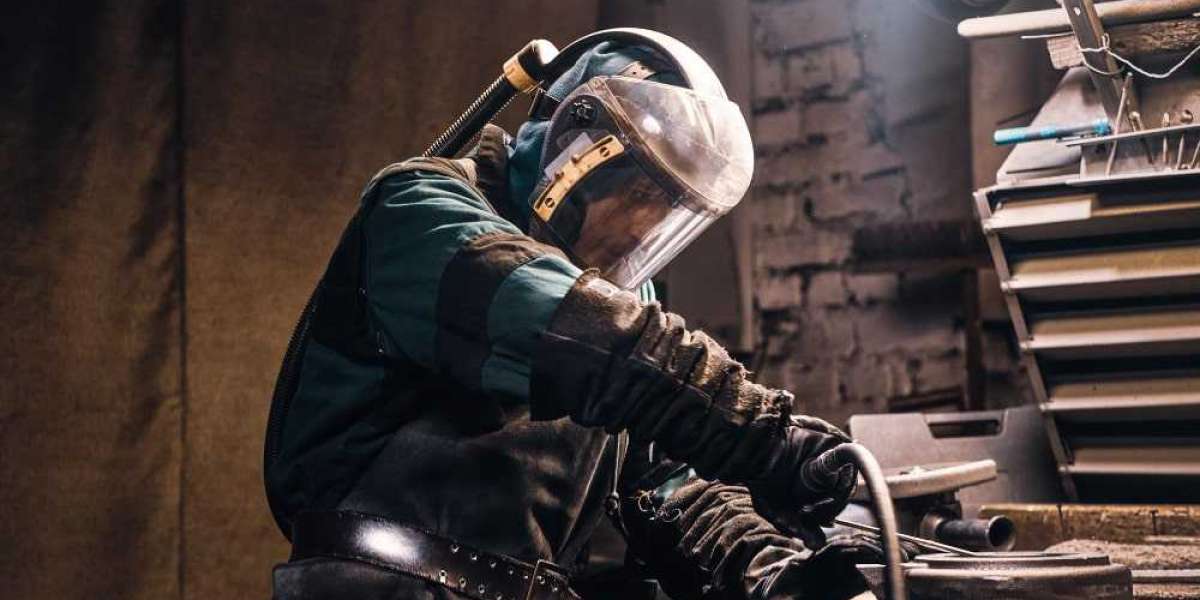Introduction:
In the realm of welding, safety is paramount. Every welder understands the significance of protective gear, especially the welding shield helmet. This indispensable tool not only safeguards the welder's vision but also plays a crucial role in ensuring precision and efficiency in welding tasks. In this comprehensive guide, we delve into the importance of welding shield helmets, their features, and why they are a must-have for any welding operation.
Understanding Welding Shield Helmets:
Welding shield helmets, often referred to as welding helmets or welding masks, are specialized headgear designed to protect welders from various hazards encountered during welding processes. These helmets serve multiple functions, primarily shielding the eyes, face, and neck from intense ultraviolet (UV) and infrared (IR) radiation emitted during welding. Additionally, they safeguard against sparks, debris, and harmful fumes, ensuring the welder's safety and well-being.
Key Features and Components:
Modern welding shield helmets come equipped with a range of features to maximize comfort, protection, and usability. Here are some key components and features to look for when selecting a welding shield helmet:
- Auto-Darkening Filter (ADF): One of the most significant advancements in welding helmet technology, ADF automatically adjusts the lens shade to protect the welder's eyes from the intense light produced during welding. This feature enhances visibility, reduces eye strain, and improves overall welding accuracy.
- Adjustable Fit: A comfortable and secure fit is essential for prolonged welding tasks. Look for helmets with adjustable headbands and straps to customize the fit according to individual preferences.
- Wide Viewing Area: A larger viewing area provides better visibility of the welding area, allowing for greater precision and control over the welding process. Helmets with panoramic lenses or large viewing windows offer enhanced visibility without compromising safety.
- Lightweight and Durable Construction: Opt for helmets made from lightweight yet durable materials such as impact-resistant polymers or fiberglass. A lightweight helmet reduces fatigue during extended use, while durability ensures long-term reliability and protection.
- Respiratory Protection: Some welding helmets come with integrated respiratory systems or compatibility with respirator masks to protect against harmful fumes and airborne particles generated during welding.
Importance of Welding Shield Helmets:
- Eye Protection: The eyes are particularly vulnerable to damage from the intense light and radiation produced during welding. Welding shield helmets with appropriate lens shades protect the eyes from harmful UV and IR radiation, preventing conditions such as arc eye or welder's flash.
- Facial Protection: In addition to eye protection, welding helmets shield the face and neck from sparks, spatter, and flying debris generated during welding processes. This reduces the risk of facial burns, abrasions, and other injuries.
- Enhanced Visibility: A clear and unobstructed view of the welding area is essential for precise and accurate welds. Welding shield helmets with advanced lens technologies, such as auto-darkening filters, improve visibility by eliminating the need to raise and lower the helmet repeatedly.
- Respiratory Safety: Welding produces hazardous fumes and gases, including ozone, nitrogen oxides, and metal vapors, which can pose serious health risks if inhaled. Some welding helmets offer respiratory protection features or compatibility with respirator masks to safeguard the welder's respiratory health.
- Increased Productivity: By providing a safe and comfortable working environment, welding shield helmets enable welders to focus on their tasks without distractions or safety concerns. This fosters greater productivity and efficiency in welding operations.
Welding cables play a crucial role in the welding process, serving as the lifeline for electricity to flow between the power source and the welding tool. These cables are specifically designed to withstand the high currents and intense heat generated during welding operations. Typically made of highly conductive copper, welding cables are insulated with durable materials like rubber or synthetic polymers to provide protection against abrasion, oil, grease, and other potential hazards in the welding environment. The flexibility of welding cables allows for ease of maneuverability, enabling welders to work efficiently and safely across various positions and distances within their workspace. Moreover, the proper selection and maintenance of welding cables are essential to ensure optimal performance and safety standards in welding operations, underscoring their indispensable role in the welding industry.
Conclusion:
In conclusion, welding shield helmets are indispensable tools for welders, offering essential protection against various hazards encountered in welding processes. From safeguarding the eyes and face to enhancing visibility and respiratory safety, these helmets play a vital role in ensuring the well-being and efficiency of welders. When selecting a welding shield helmet, prioritize features such as auto-darkening filters, adjustable fit, wide viewing area, and respiratory protection to maximize safety and comfort. Remember, investing in quality protective gear is investing in the longevity of your welding career and, most importantly, your health and safety.



